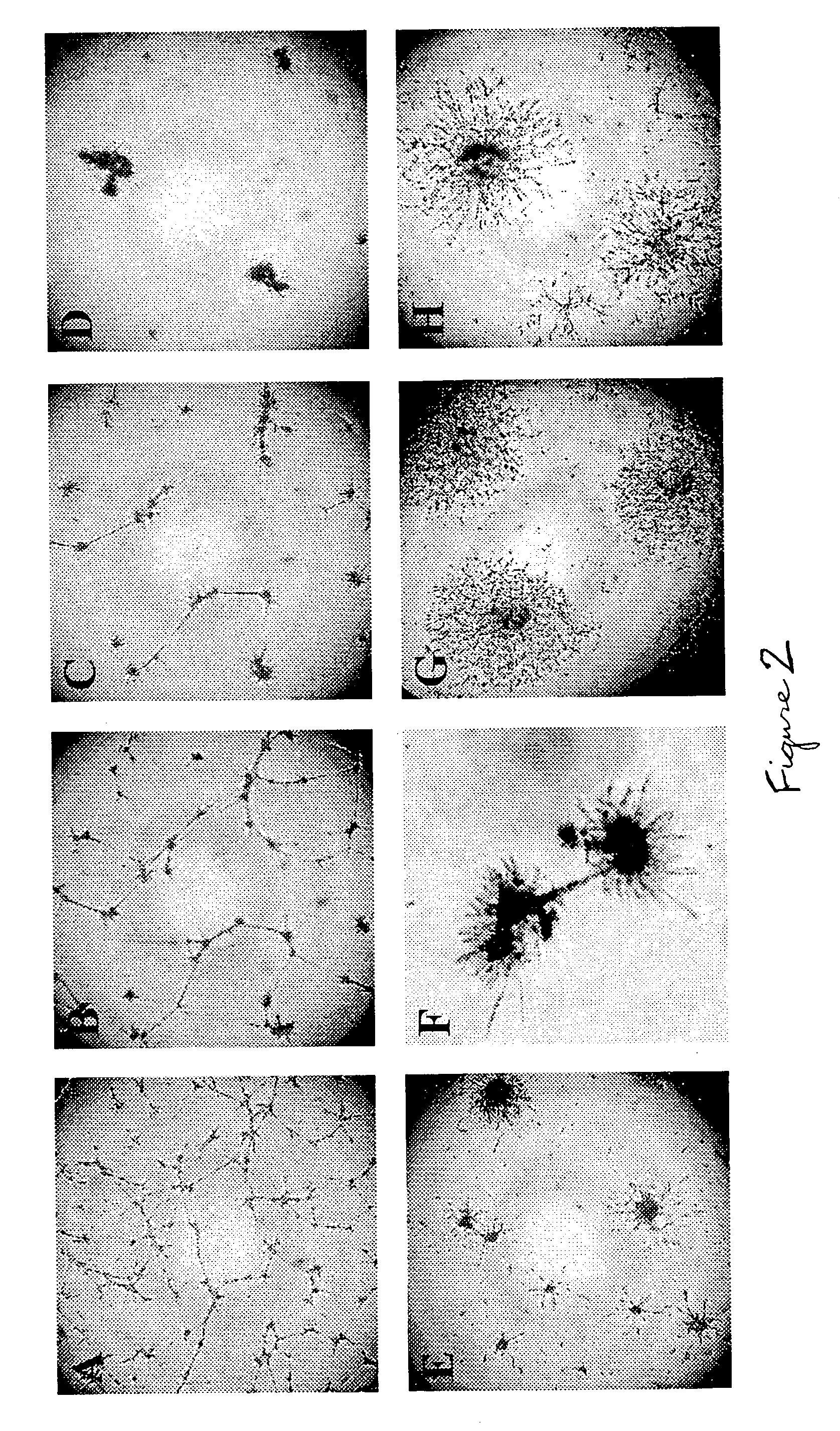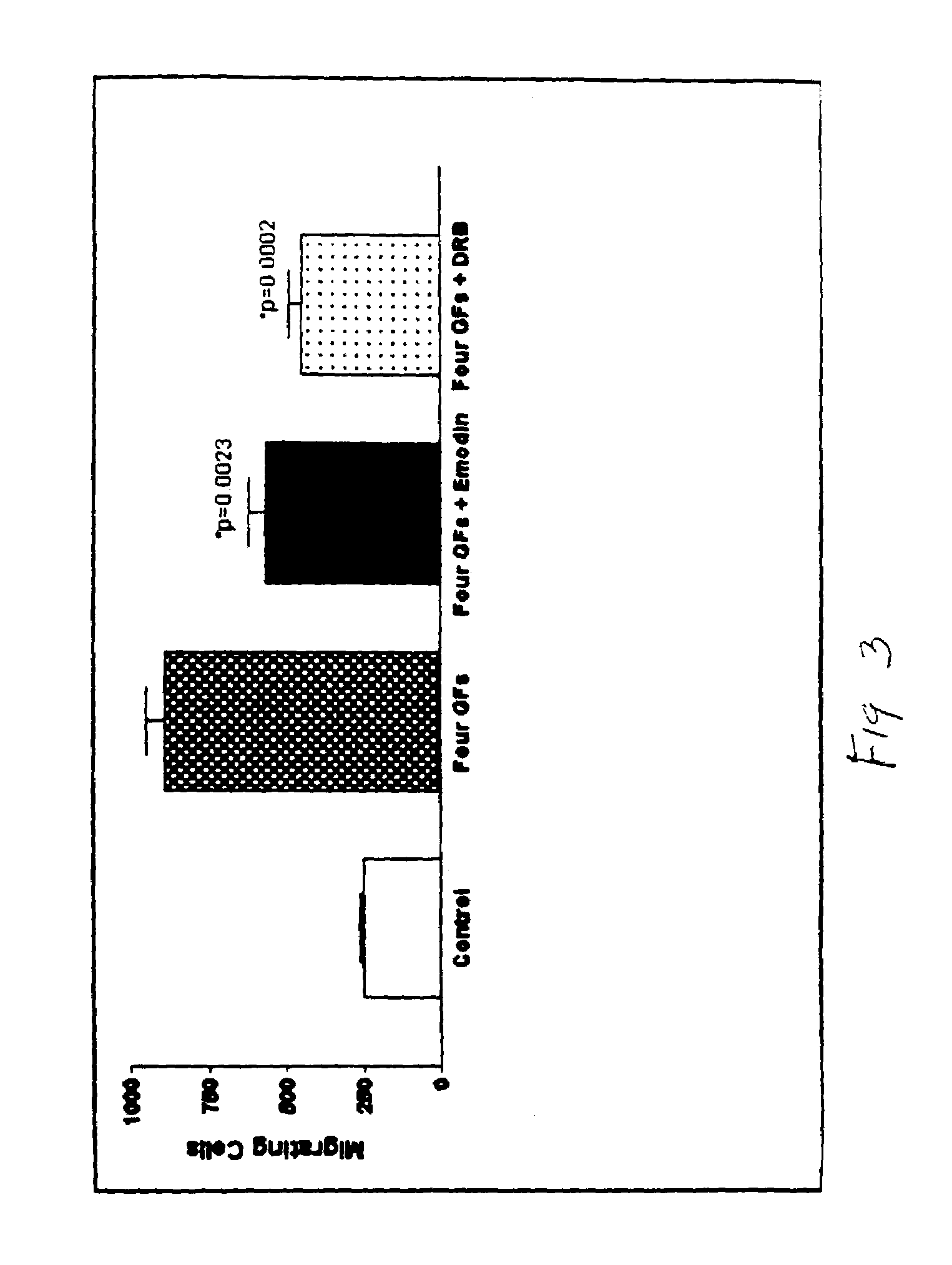Secondary sprouting for isolation and expansion of endothelial sprout cells and endothelial precursor cells from a mixed population and for screening substances
a technology of endothelial sprout cells and precursor cells, applied in the field of medical science, can solve the problems of vegf inhibitors only partially preventing ocular neovascularization and vessel hyperpermeability, blindness in premature newborns, diabetics, etc., and achieves enhanced secondary sprouting, increased colony number, and enhanced secondary sprouting
- Summary
- Abstract
- Description
- Claims
- Application Information
AI Technical Summary
Benefits of technology
Problems solved by technology
Method used
Image
Examples
example 1
Synergistic Effects of Angiogenic Growth Factors on Cultured Retinal Endothelial Cells (REC)
[0093]Alterations of angiogenic growth factors and retinal basement membranes (BMs) are important for diabetic retinopathy (DR) pathogenesis. Consequently, whether angiogenic growth factors can mediate angiogenic behavior of retinal endothelial cells (REC) in an additive manner was examined.
[0094]Human REC (from normal, diabetic and patients with DR [“DR REC”]) and bovine REC were cultured in monolayer (for migration assay) or on top of MATRIGEL™ biological cell culture substrate where cells form capillary-like tubes. They were treated with angiogenic growth factors or their combinations (at 10 ng / mL of each factor), and seeded with or without TN-C at 10–50 μg / mL. Cell numbers were determined by MTS assay (Promega Corp., Madison, Wis.). Tube length and number, and cell migration were assessed microscopically.
[0095]Retinal endothelial cells were isolated from fresh bovine eyes (Sierra for Medi...
example 2
Synergistic Effects of Growth Factors on Angiogenic Cellular Behaviors
[0104]It was found that growth factors synergized to promote REC angiogenic behavior. Growth factor activities were rather selective. IGF-I preferentially synergized with VEGF, but FGF-2 coupled with PlGF (FIG. 1). PDGF-BB had a slight preference for FGF-2. However, it was so potent in REC by itself, that other factors only mildly enhanced its action. Individual growth factor effects on REC behavior varied. For example, VEGF had little effect on REC survival but significantly enhanced migration. IGF-I was the opposite. However, VEGF+IGF-I exerted an additive effect on cell survival, tube formation, sprouting, migration, and proliferation. REC treated with combinations of four or five growth factors showed significant, several-fold, enhancement of most angiogenic parameters tested (FIG. 1). Therefore, some angiogenic responses may be triggered only by growth factor combinations.
[0105]Vascular damage in DR is follow...
example 3
Gene Array Analysis of Growth Factor Action on Normal REC and DR REC
[0114]Normal REC and DR REC gene expression patterns were compared by gene array analysis. Normal, diabetic and DR autopsy human eyes are obtained from National Disease Research Interchange (NDRI), within 24 hours after death. These eyes are used to isolate REC for culture as described hereinabove. Cultures can be used up to the fourth passage, and viable cultures can be cryogenically stored. Cultures of normal, diabetic and DR REC are established from autopsy human eyes and routinely checked for purity using von Willebrand factor immunostaining as described hereinabove. Cells are cultured in 50% F-12, 50% low-glucose DMEM with antibiotics / antimycotics (GIBCO / BRL), insulin-transferrin-selenite, ECGS (Sigma Chemical Co.), and 20% FCS. Statistical analysis of results is done with GraphPad Prism software (GraphPad Software).
[0115]In experiments, normal, diabetic, and DR REC were grown for seven days with or without 10 ...
PUM
| Property | Measurement | Unit |
|---|---|---|
| concentration | aaaaa | aaaaa |
| concentration | aaaaa | aaaaa |
| concentrations | aaaaa | aaaaa |
Abstract
Description
Claims
Application Information
 Login to View More
Login to View More - R&D
- Intellectual Property
- Life Sciences
- Materials
- Tech Scout
- Unparalleled Data Quality
- Higher Quality Content
- 60% Fewer Hallucinations
Browse by: Latest US Patents, China's latest patents, Technical Efficacy Thesaurus, Application Domain, Technology Topic, Popular Technical Reports.
© 2025 PatSnap. All rights reserved.Legal|Privacy policy|Modern Slavery Act Transparency Statement|Sitemap|About US| Contact US: help@patsnap.com



